A First Look at Dance Stage Makeup
Considering performing under those bright stage lights, ‘Dance Stage Makeup’ is far from your everyday beauty routine. It’s more like crafting a mask that not only enhances your expressions but also withstands the heat and movement of the performance. I’ve learned a thing or two about this art form, and let me tell you it’s as much a part of the costume as the outfit itself.
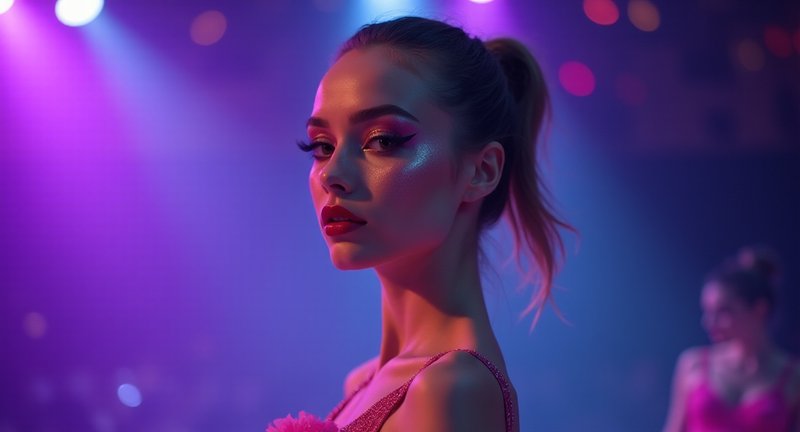
Here’s what makes Performance makeup for dancers so unique:
-
Bold Features: Whether you’re in the back row or front and center, every dancer’s face needs to be seen from afar. This means exaggerated eyes, sharp contours, and bright lips that can be seen under intense stage lighting.
-
Long-Lasting Formulas: You’re moving, sweating, and giving it your all on stage. Dance makeup needs to endure all of that, so we’re talking sweat-resistant, smudge-proof, and waterproof products.
-
Drama in Detail: It’s not just about applying makeup it’s about creating a character. Think larger-than-life eyeliner wings, vibrant blush, and shimmer that catches the light just right.
But beyond technique, it’s also about how this makeup makes you feel. Stage-ready dance cosmetics gives you that transformative edge whether you’re embodying a graceful swan or a fiery Latin dancer. Once your face is fully done up, you’re ready to step into that spotlight and let your confidence shine as much as the makeup does. Trust me, the right makeup brings out not only the character but the performer within you.
The Art of Dance Stage Makeup
With a focus on performing under those stage lights, makeup transforms from a mere cosmetic touch-up to a powerful tool of expression. I’ve seen it firsthand makeup becomes part of the storytelling, amplifying every movement, every glance, so the audience doesn’t miss a thing. It’s a fine balance between artistry and practicality, and here’s what I’ve learned along the way.
First, let’s talk colors. Your palette should be bolder than usual, no doubt. Those lights will wash out anything too subtle. So, rich reds, vibrant blues, and dramatic blacks become your best friends. But don’t just grab the brightest shade you can find think about the character you’re embodying, or the mood you’re trying to set. It’s about creating a whole visual narrative on your face.
Another essential element? Layers. Sounds odd, I know, but hear me out. Layers help you maintain definition even when you’re sweating under those intense lights. From foundation to powder, each step locks the previous one in place. I like to think of it as building a structure that won’t crumble when the heat is on literally.
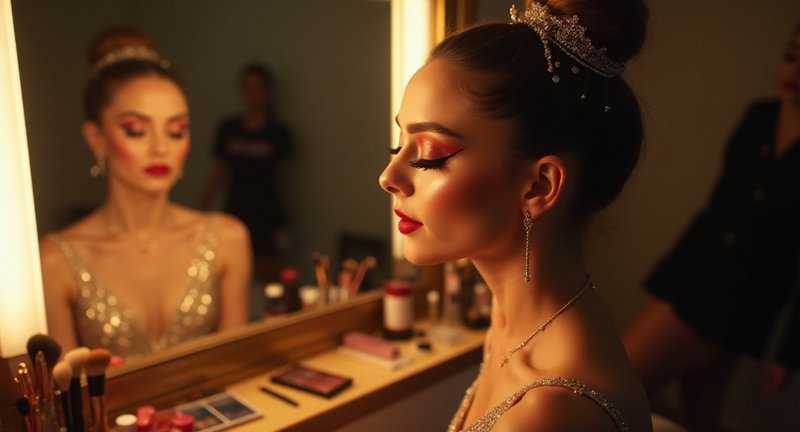
And here’s a tip I wish someone told me earlier: don’t skip false lashes. I was hesitant at first, but they add dimension you can’t get any other way. Plus, they make your eyes pop from the back row.
Quick checklist for you:
- Choose long-wear products – You need makeup that stays, no matter the sweat or tears.
- Use setting spray – This will seal the deal.
- Don’t forget waterproof – Mascara, eyeliner anything that can run, will. Waterproof it all.
In the end, stage makeup is less about perfection and more about creating an effect, a lasting impression. It’s a blend of technical skill and creative flair, something I’ve come to love.
Importance of Stage Makeup for Performers
Stage makeup is a transformative force for any performer stepping into the limelight. It’s not just about looking good under bright lights, but about embodying the character or emotion that the performance demands.
From my own experience, I’ve learned that the face is like a canvas, and stage makeup adds those bold strokes that make every expression readable from the farthest corner of the audience. Without it, performers can appear washed out or disconnected from the narrative they are sharing.
Imagine stepping into a role, whether it’s a dynamic, powerful character or someone more delicate and nuanced. Your makeup choices reinforce the depth of that role, shaping not just how you feel, but how you are perceived. The balance is in making sure your features are exaggerated, yet still authentic.
The lights can be harsh, washing out skin tones, blurring facial details. Stage makeup compensates for this, sharpening the contours of the face, amplifying expressions, and ensuring the energy of the performance hits the audience full force.
Have you ever tried performing without makeup? Trust me, you’ll feel invisible. The makeup becomes an extension of your costume, a part of the visual language that tells your story. It’s not vanity, it’s necessity.
In the end, it’s the small details, the shimmering highlights or the perfectly defined eyes, that connect you with every audience member, ensuring they don’t just watch you make them feel.
Essential Tools for Applying Performance Makeup
In relation to applying performance makeup, having the right tools in your arsenal is just as important as the makeup itself. Over the years, I’ve tried a variety of applicators, brushes, and blenders, and I can confidently say that the right tool makes all the difference. Here’s a breakdown of essentials you’ll want to have on hand to master the art of creating a flawless, long-lasting look.
1. Quality Makeup Brushes:
You’ve probably heard this one before, but don’t underestimate the power of a good set of brushes. A dense foundation brush or stippling brush ensures an even, airbrushed finish, while a tapered brush will give you precision when contouring. For the eyes, use a flat shader brush for packing on pigment and a blending brush to seamlessly diffuse the edges of your shadows.
2. Beauty Sponge:
A damp sponge works wonders for pressing product into the skin. It’s a secret weapon when it comes to making foundation and concealer look seamless and natural. Plus, it can be used to pick up excess product, giving you control over the intensity of your look.
3. Setting Spray:
I used to skip this step until I realized just how crucial it is. A good setting spray not only locks everything in place but also keeps your makeup looking fresh through hours of heat and sweat. It’s like a shield for your hard work!
4. Eyelash Applicator Tool:
Falsies are often a must in performances, but they can be tricky to apply. Trust me, an eyelash applicator tool will save you so much frustration. It allows for a steady hand when placing those tricky strips.
5. Precision Tweezers:
To tame unruly brows or remove any small bits of glue, tweezers come in handy more often than you’d think.
With these tools in hand, you’re fully equipped to create a polished, high-performance makeup look that can withstand the spotlight. And remember, every tool you invest in is another step towards mastering your craft.
Choosing the Right Foundation for Dance
In the context of choosing the right foundation for dance, you’re not just thinking about color match or finish. This is about finding a product that will stick with you through every turn, leap, and spin. The trick is to seek out a formula that can stand up to sweat but still lets your skin breathe, like it’s having its own little dance party underneath.
I’ve been there testing foundations that promised me the moon but gave me an oily mess halfway through a performance. The key is looking for a foundation that stays weightless on your face, even under hot stage lights. It should feel like a second skin, one that you almost forget is there, but delivers flawless coverage.
And here’s a little secret: the finish matters as much as the formula. If it’s too matte, you’ll lose that natural glow that makes you look alive and vibrant under the lights. Too dewy, and you risk looking like you’ve just run a marathon. It’s all about balance just the right amount of luminosity to reflect your energy without looking greasy.
Another thing I’ve learned along the way? Priming is your best friend. A good primer will smooth out your skin and help your foundation grip like it’s got magnets in it. You don’t want anything slipping or sliding while you’re in the middle of nailing that routine, trust me.
In the end, the right foundation for dance is like your favorite dance shoes: it just feels right, supporting you effortlessly, no matter what moves you throw at it.
Tips for Creating a Flawless Base
Creating a flawless base is more than just slapping on foundation and calling it a day. It’s like building a house you need a solid foundation before you can add the finer details. The first step? Prep your skin as if it’s your most treasured canvas. I always start with a good moisturizer, even if you have oily skin, because it gives that smooth, hydrated finish we all crave.
Primer is non-negotiable. It’s that invisible barrier that stops your makeup from melting off halfway through the day. Trust me, the difference is night and day. Choose one that complements your skin type, whether it’s mattifying or illuminating. I swear, a good primer will make everything glide on like butter.
Now, the foundation itself. Here’s where people often get it wrong less is more. Don’t cake it on! Buff it in gently with a damp sponge or a brush, working from the center of your face outward. You’re not trying to mask your skin, just even it out. I learned long ago that building up coverage in light layers gives a more natural and airbrushed finish.
Next, concealer is your best friend, but only where it’s needed. I like to brighten under the eyes and cover any blemishes without going overboard. The trick? Blending until it melts seamlessly into the foundation, so there’s no obvious demarcation line.
As a matter of fact, set everything lightly with a translucent powder. But here’s the key just in the areas where you get shiny. You want to keep that glow everywhere else because, let’s face it, matte can look flat.
Enhancing Features with Contouring Techniques
Contouring is a brilliant tool, and when done right, it can truly enhance anyone’s natural features. I’ve always found it fascinating how a few strategic swipes of bronzer and highlighter can transform the face without making you look overly made up.
One of my favorite things about contouring is how it helps shape the face. Whether you’re aiming to define your cheekbones or soften a jawline, there’s a technique for every feature. Sometimes, I feel like I’m sculpting a masterpiece, carefully emphasizing angles and curves that deserve a spotlight.
What’s even better is that it’s not about masking anything. It’s more about highlighting what’s already there. I’ve seen how a well-placed highlighter can make eyes pop or create a glowing effect that radiates confidence from within.
There’s no one-size-fits-all here, though. The beauty of contouring lies in its flexibility tailoring techniques to your face shape, lighting, and, of course, the occasion. I’ve experimented with dozens of different combinations to find what works best for me. It’s all about playing with shadows and light.
And honestly, you don’t need a thousand products to get it right. With just a bronzer, highlighter, and a little patience, anyone can master the basics. It’s an art form, really one that’s surprisingly approachable once you get the hang of it.
Selecting the Best Eye Makeup for Dance
In the matter of eye makeup for dance, there’s a real art in balancing drama with functionality. Whether you’re twirling under spotlights or hitting a perfectly timed leap, your eyes need to pop and stay in place through all that movement and sweat. Let me take you through some key tips from my experience.
First things first: go bold or go home but smartly. Dance lighting can wash out even the brightest looks, so don’t be afraid to reach for deep pigments. But here’s the secret: it’s not just about the color; it’s about the formula. You want your makeup to survive not just the performance, but the nerves, sweat, and energy of the event.
Key steps to master your eye makeup for dance:
- Start with a primer: This ensures everything stays where it should, no matter how many spins you pull off.
- Matte shadows are your friend: While shimmer may be tempting, matte holds up better under harsh lighting and doesn’t create unwanted reflections.
- Layer your eyeliner: Use gel for precision, then top with a waterproof liquid liner to lock it in. This will survive any mid-performance tears (I know we’ve all been there).
- False lashes, but go natural-ish: Opt for ones that enhance without overpowering your face, because you want to express emotions, not lose them behind a heavy lash.
- Don’t forget the inner corner highlight: This little pop can open your eyes and make your expressions even more captivating.
My final thought? Less is more… except when it’s not. You’ll find the balance between expressive and overdone after a few tries, and when you nail it, you’ll never look back.
Techniques for Dramatic Eye Looks
As it relates to creating dramatic eye looks, there’s so much more than just layering shadows. If you want your eyes to pop and make a statement, think bold and theatrical like what you’d use for Dance Stage Makeup. I’ve played around with countless techniques, and trust me, the eyes can steal the show with the right tricks.
First off, don’t shy away from:
-
Layering contrasting colors: Forget blending neutrals. Pair electric blues with deep purples or fiery reds with metallic golds. These contrasts bring depth and a surreal intensity to your eyes.
-
Overlining: This one’s a game-changer. By extending your eyeliner past the natural edge, you create a striking, elongated look. Winged liner? Make it sharper and fiercer, almost dagger-like. Trust me, it’s mesmerizing.
-
Playing with negative space: Leaving areas of your lid bare or accenting with just a hint of shimmer lets your eyes breathe, while still looking bold. It’s the perfect balance of edgy and chic.
Now, when it comes to lashes, the bigger the better:
-
Double-stacking false lashes: This amps up volume like nothing else. It adds a fluttery, doll-like effect that’s essential for stage-worthy eyes.
-
Colored mascara: While black mascara is a classic, try swapping it for cobalt or emerald tones. It’s subtle in its own way but adds that unexpected twist.
For Performance eye makeup, or even your own experimental looks, don’t be afraid to go all in. The eyes are your canvas let them shine in ways you’ve never imagined.
How to Apply Lip Color for Maximum Impact
As it relates to applying lip color for maximum impact, I’ve learned that the devil truly is in the details. Your lips can be a captivating focal point, but achieving that ultimate allure takes some finesse. Here’s how I like to approach it:
-
Prep Your Canvas: Before diving into color, exfoliate your lips with a sugar scrub. This makes a world of difference, creating a smooth base that catches the light beautifully.
-
Hydration is Key: Always apply a nourishing lip balm. It acts as a barrier and keeps your lips plump and hydrated, making your color application smoother and more vibrant.
-
Choose the Right Shade: Select a hue that complements your overall look and skin tone. Bold reds and deep berries can exude confidence, while soft pinks and nudes create a fresh vibe.
-
Outline for Precision: Use a lip liner in a shade that matches your chosen color. This defines your lips and prevents feathering, ensuring that your masterpiece stays put throughout the day.
-
Layering Magic: Apply your lip color with a brush for precision. Start at the center and work your way outwards. For an added punch, dab on a touch of gloss to enhance shine.
-
The Finishing Touch: A spritz of setting spray can be a game-changer. It locks in your look and gives your lips that enviable, long-lasting allure.
Remember, your lips are not just another feature; they are a statement. So, embrace the power of color, and let your lips do the talking!
Setting Your Makeup for Longevity
When it comes to achieving that ultimate longevity in your makeup, I’ve discovered some transformative techniques that really make a difference. The secret? It’s all about layering and setting with intention. Here’s how I do it:
-
Prep Your Canvas: Start with a clean, moisturized face. I can’t stress enough the importance of a good primer this is your armor against the elements. Choose one that suits your skin type, whether it’s matte, hydrating, or illuminating.
-
Choose Your Weapons Wisely: Opt for high-quality, long-wear formulas. Think of foundations, concealers, and eyeshadows that promise endurance. I love products that contain silicone; they create a silky barrier that holds everything in place.
-
Layer Strategically: Apply your foundation with a damp sponge for an airbrushed effect. Follow with concealer in a dabbing motion. This layering technique helps to build coverage while keeping it lightweight.
-
Set the Stage: After applying all your makeup, it’s time for the magic dust translucent powder. Lightly dust it over your face to absorb any excess oils and lock in your look. A setting spray is your final flourish; it gives your makeup a dewy finish and adds that extra level of hold.
-
Touch-Up Essentials: Carry a compact and a setting spray for those inevitable touch-ups throughout the day. A little extra powder can be a lifesaver, especially in humid conditions.
Remember, the ultimate goal is not just to look good but to feel confident in your skin. So, go ahead and embrace these tips; your makeup will thank you!
Dance Stage Makeup: A Complete Breakdown
Concerning transforming into a character on stage, the artistry of cosmetics takes center stage quite literally! I’ve had my fair share of experiences with theatrical face adornments, and let me tell you, the right look can elevate a performance from mundane to mesmerizing. Here’s how I break it down:
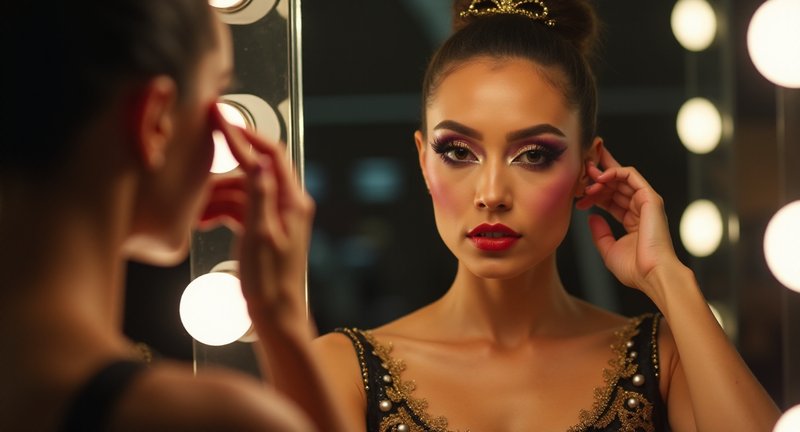
Preparation is Key
- Clean Canvas: Start with a fresh face. A good cleanse and moisturization create the ideal base.
- Prime Time: A primer helps your makeup withstand the sweat and lights, keeping your masterpiece intact.
Color Palette Selection
- Bold vs. Subtle: Depending on the mood of the performance, choose colors that pop. Think vibrant reds, electric blues, or shimmering golds to draw attention.
- Complement Your Costume: Ensure your colors resonate with your outfit. A cohesive look can enhance your character’s narrative.
Application Techniques
- Layering is Everything: Use a foundation that matches your skin tone, then layer on concealer for any blemishes. Finish with a dusting of setting powder to lock it in.
- Eyes that Captivate: Don’t shy away from eyeliner and false lashes! Dramatic eye makeup can convey emotions that words cannot. I often play with glitter or bold shadows for added flair.
Final Touches
- Lips with Impact: A vibrant lipstick can be a game-changer. Consider long-lasting formulas to avoid mid-show touch-ups.
- Sparkle and Shine: Don’t forget to add highlighter to accentuate cheekbones and brow bones, giving your face a radiant glow under the stage lights.
Also, it’s about finding what resonates with you and allows your character to shine through. Embrace the art of transformation; it’s a journey as thrilling as the performance itself!
Common Mistakes to Avoid in Stage Cosmetics
When discussing the world of performance cosmetics, I’ve witnessed my fair share of blunders that can turn a stunning look into a total misstep. Whether you’re gracing the stage for a theatrical performance or a spirited dance recital, avoiding common pitfalls can elevate your presence. Let’s dive into a few key mistakes to sidestep for that polished, professional appearance.
1. Overdoing the Shimmer
Glitter can be magical, but moderation is crucial. A full face of sparkles might dazzle the audience, but it can also wash out under bright lights. Instead, select strategic areas to highlight perhaps a hint on the cheekbones or the inner corners of the eyes.
2. Neglecting the Base
A solid foundation is the canvas for your artistry. Skipping primer can lead to a patchy finish. I’ve learned that investing in a good primer not only smooths imperfections but also ensures longevity throughout the performance.
3. Choosing the Wrong Shades
Nothing shouts ‘amateur’ quite like mismatched colors. Test your products under stage lighting to avoid surprises. Colors that look fabulous in natural light may fade or clash dramatically under spotlights.
4. Forgetting the Brows
Eyebrows frame the face and can dramatically alter your expression. A common oversight is neglecting them. Whether you opt for bold brows or soft, natural ones, ensure they’re defined your expressions will pop!
5. Ignoring Skin Preparation
A rushed application often leads to disaster. Take the time to prep your skin properly. Hydrate and moisturize ahead of time for a smooth canvas, and don’t forget to set your look with a finishing spray to keep everything in place.
Embracing these tips from my experience can save you from the typical cosmetic faux pas and help you shine brightly on stage!
Special Effects Makeup for Theatrical Performances
Special effects makeup for theatrical performances is like stepping into a painter’s dream, where the canvas is human skin and imagination knows no bounds. I remember my first experience with it transforming a simple actor into a menacing creature. It felt like alchemy, turning ordinary into extraordinary with just a splash of color and a touch of latex.
Creating these visual marvels often begins with the basics: a solid foundation and an understanding of character. You’re not just applying makeup; you’re narrating a story, evoking emotions that resonate with the audience. Each brushstroke is a word, each contour a sentence.
One of the most thrilling aspects is experimenting with textures and materials. Gelatin, for example, can morph into scars or monstrous appendages with a bit of creativity. It’s like sculpting with your hands, and the thrill of the unexpected keeps the adrenaline flowing.
Lighting plays a crucial role too. What looks vibrant under stage lights might appear dull in natural light. This dance of shadows and highlights challenges you to think like a magician, conjuring depth and dimension where none existed.
Don’t underestimate the power of details, either. A well-placed bruise or a subtle wrinkle can elevate a character’s authenticity. The audience may not notice every single element, but their subconscious will pick up on the nuances, making the performance all the more gripping.
In this world of special effects, you have the chance to push boundaries. Embrace the wild and whimsical, and let your creativity run free. After all, in theater, the only limit is your imagination.
How Lighting Affects Makeup Choices
In the matter of makeup, lighting can be the ultimate game-changer. I’ve often found myself experimenting with my look under different light sources, and trust me, the transformation can be astonishing. Whether you’re prepping for a night out or simply want to elevate your daily routine, understanding how lighting affects your makeup choices is crucial.
Types of Lighting and Their Impact:
-
Natural Light: This is your best friend. It reveals the true colors and textures of your makeup. I love to check my look by a window; it’s like having a personal spotlight.
-
Incandescent Light: Warm and flattering, this type of lighting can create a cozy ambiance. However, it can also wash out bold colors, so I tend to tone down my palette when I know I’ll be in this kind of light.
-
Fluorescent Light: A bit harsher and cooler, fluorescent lighting can expose every imperfection. When I face this light, I opt for heavier foundations and setting powders to keep everything in check.
-
LED Lighting: With its bright and vibrant glow, LED can be tricky. It enhances colors beautifully but can also amplify shine. A matte finish becomes essential here.
Pro Tips:
- Test your makeup in various light settings before committing to a look.
- Carry a portable mirror with good lighting for touch-ups on the go.
- Remember that what looks good in one light might not in another flexibility is key.
In my experience, mastering the interplay of lighting and makeup can make all the difference in how you present yourself to the world. Embrace the challenge!
Helpful Information
What is stage makeup for dance?
Stage makeup for dance is a specialized form of cosmetic application designed to enhance a dancer’s features under bright stage lights. The intense lighting can wash out facial features, making it difficult for the audience to see expressions. Therefore, stage makeup is usually heavier and more dramatic than everyday makeup, focusing on defining the eyes, lips, and cheeks to ensure the dancer’s emotions and expressions are visible from a distance. This type of makeup is essential for conveying character and enhancing the overall performance.
What kind of makeup do dancers wear?
Dancers typically wear stage makeup that includes a range of products to achieve a bold, defined look. This often includes foundation that is several shades darker than their natural skin tone to combat the effects of bright lights. They also use eyeliner, eyeshadow, and mascara to accentuate the eyes, along with blush and lip color that stands out. Additionally, some dancers may incorporate glitter or face paint for themed performances. The goal is to create a striking appearance that holds up under intense lighting and movement.
How to do makeup for a dance concert?
To do makeup for a dance concert, start with a clean, moisturized face. Apply a high-coverage foundation to create a smooth canvas, followed by a setting powder to ensure it stays in place. Use a darker contour shade to define cheekbones and jawlines, and choose bold colors for eyeshadow and lipstick. Focus on the eyes with eyeliner and mascara to create drama, ensuring they are visible from afar. Finish with a setting spray for longevity. Practice the look ahead of time to ensure it complements the dance costume and enhances performance.
What type of makeup is best for stage use?
The best makeup for stage use is specifically formulated to withstand bright lights, intense movement, and varying temperatures. This typically includes high-pigment products that won’t easily fade or smudge. Professional-grade stage makeup often features thicker formulations, such as cream foundations, long-lasting eyeliners, and waterproof mascaras. Brands designed for theatrical performance usually provide more coverage and are formulated to withstand sweat. Additionally, using setting powders and sprays can help lock in the look, ensuring that the makeup remains intact throughout the performance.
What is the difference between stage makeup and regular makeup?
The primary difference between stage makeup and regular makeup lies in the intensity and purpose of the application. Stage makeup is designed to be more dramatic, with higher pigmentation to ensure visibility from a distance and under harsh lighting. It often uses thicker formulations that offer better coverage and longevity, while regular makeup is usually subtler and meant for everyday wear. Additionally, stage makeup frequently includes products specifically formulated to resist sweat and movement, making it essential for performers who need their look to last throughout a show.
What is basic stage makeup?
Basic stage makeup refers to the essential products and techniques used to create a foundational look for performances. This typically includes a full-coverage foundation, a contour product to enhance facial structure, and blush to add color to the cheeks. Additionally, a basic stage look often emphasizes the eyes with bold eyeliner, mascara, and vibrant eyeshadows. Lips are usually defined with a long-lasting lipstick. The goal of basic stage makeup is to create a polished appearance that is visible and expressive under bright stage lights while being suitable for the specific performance.
What foundation to use for stage makeup?
For stage makeup, it’s best to use a foundation that is specifically designed for performance. Look for high-coverage, waterproof formulas that can withstand heat and sweat, ensuring the makeup lasts throughout the show. Cream foundations are often preferred, as they provide better coverage and a more polished finish. Choosing a shade that is slightly darker than your natural skin tone can also help counteract the effects of stage lighting. Setting the foundation with a translucent powder will help lock it in place and reduce shine, ensuring a flawless appearance.
How to do stage makeup eyes?
To do stage makeup for the eyes, start with an eyeshadow primer to create a smooth base and enhance color payoff. Use bold, vibrant eyeshadows to create depth, blending darker shades into the crease for dimension. Apply eyeliner to define the eyes, opting for a thicker line to make them stand out from a distance. Waterproof mascara is essential to prevent smudging during performances. Consider adding false lashes for extra drama and ensure the look is complemented by your overall stage makeup theme. Finish with a setting spray to keep everything in place.
What foundation is best for dancers?
The best foundation for dancers is one that offers high coverage and long-lasting wear, ideally with a matte finish to reduce shine. It’s crucial to select a foundation that is sweat-proof and resistant to smudging, as dancers are often in motion under bright stage lights. Cream or liquid foundations specifically formulated for stage use tend to work well, as they provide durability and can be easily blended. Choosing a shade slightly darker than your natural tone can help enhance your features on stage, ensuring a balanced and striking look throughout the performance.
What is considered stage makeup?
Stage makeup encompasses a variety of cosmetic products and techniques specifically designed for theatrical performance, including dance. It includes high-pigment foundations, eyeliners, blushes, and lip colors that are often more intense than everyday makeup. Stage makeup is applied to enhance facial features under bright lights, ensuring visibility and expressiveness from a distance. It also includes products that are long-lasting and resistant to sweat, allowing performers to maintain their look throughout a show. Overall, stage makeup aims to create a dramatic, defined appearance that complements the performance and character portrayed.



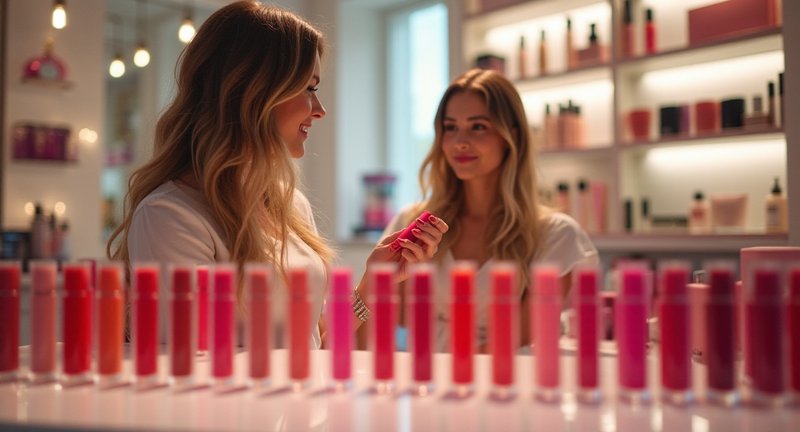
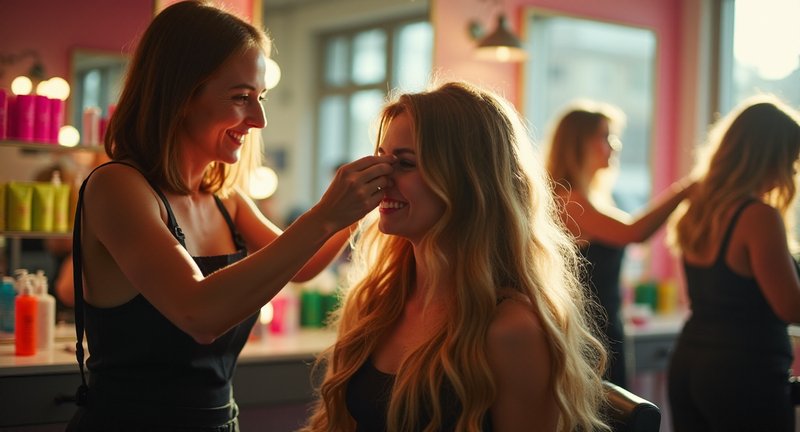
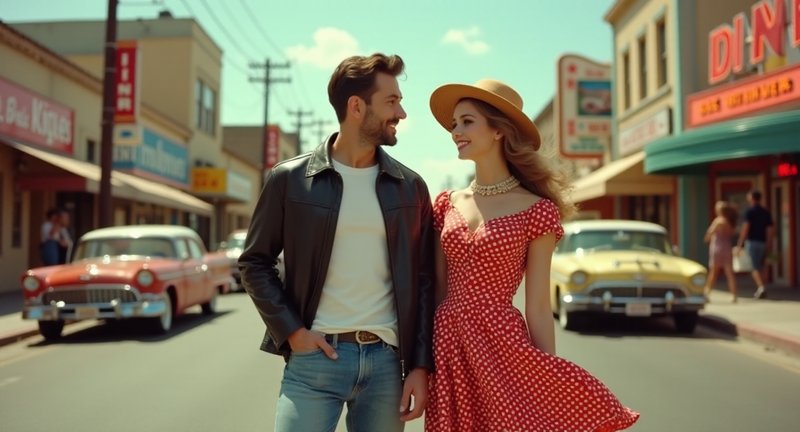
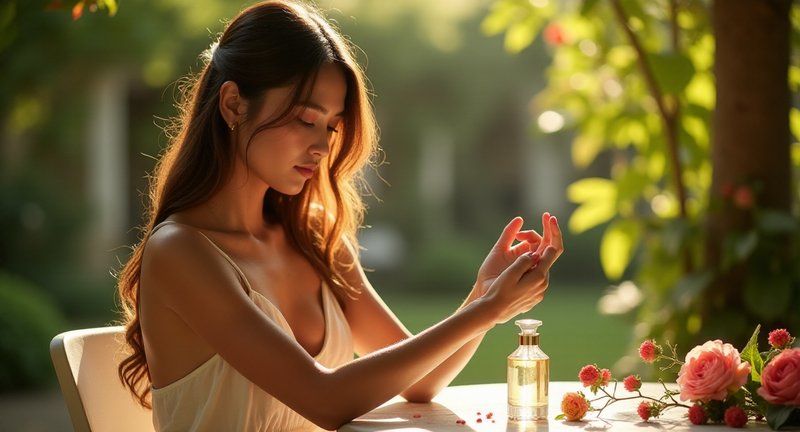
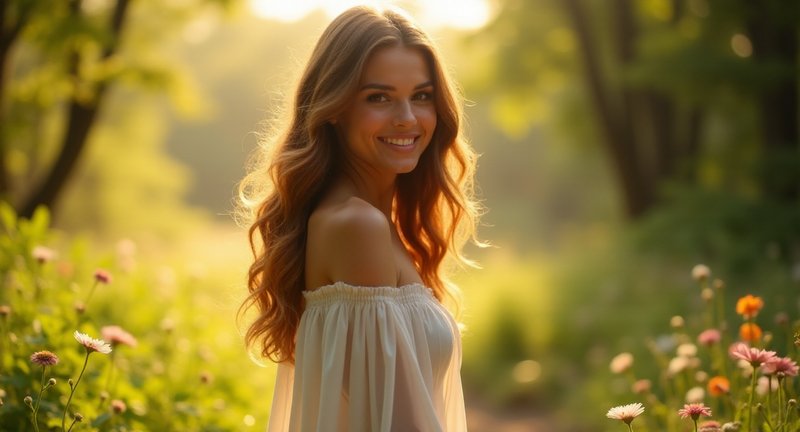
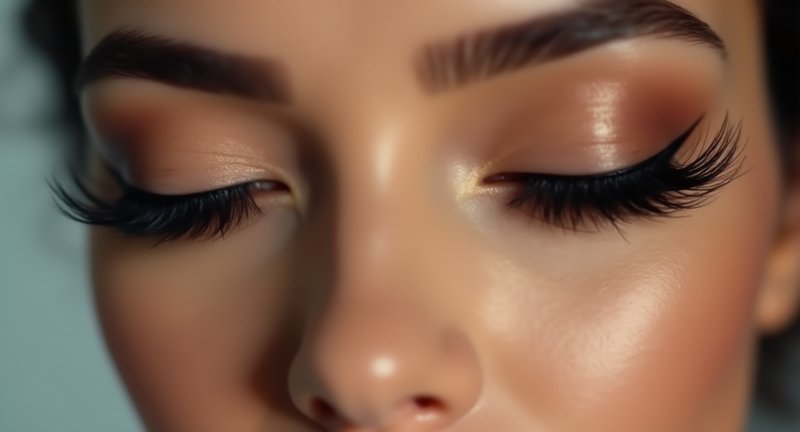
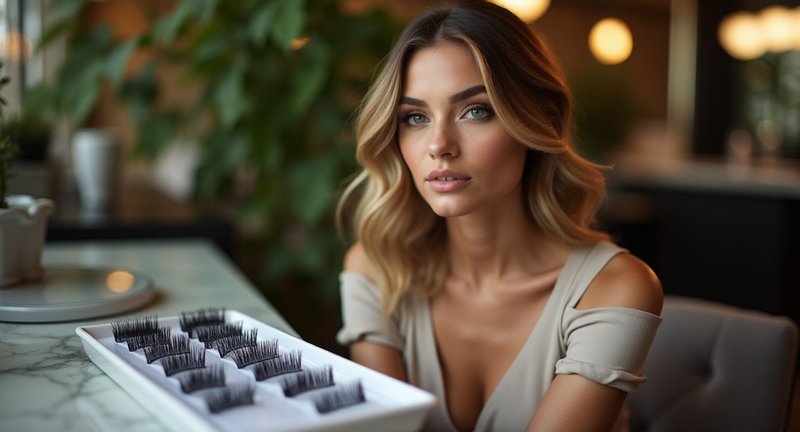
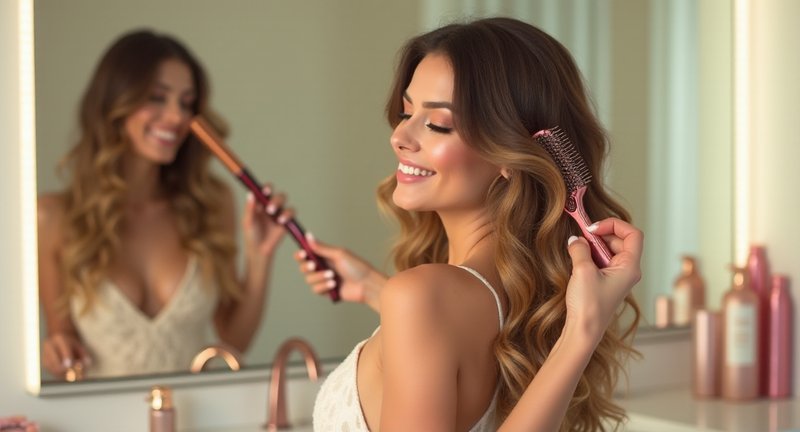
Yes, yes, yes! Prepping the skin is everything! I used to wonder why my foundation never sat right, and it turns out I wasn’t giving my skin the love it needed first. That moisturizer step is so underrated, especially for people with oily skin who think they can skip it. And I couldn’t agree more on primer – I remember the first time I used one, it was like a revelation. Suddenly, my makeup stayed in place ALL DAY. And blending foundation in light layers? That’s key. I used to glob it on and wonder why it looked cakey. Less really is more when it comes to that natural finish! Love the tip on translucent powder just where you need it – matte all over can totally kill that healthy glow. This advice is spot on for creating a natural, long-lasting look!
Oh my gosh, finding the perfect foundation for dance is such a struggle, right? I’ve definitely had those moments when my foundation didn’t make it through the first act! I’ve been using one with a soft matte finish that still has a bit of glow, and it’s been working wonders. And yes, primer is EVERYTHING! It’s like my backstage bestie. Great tip on balancing luminosity – it’s so easy to go too shiny or too flat.
Totally agree about the tools being essential! I used to think I could just make do with any old brush, but once I invested in a good set, it was like night and day. That stippling brush for foundation? Game-changer for me. And you’re so right about the beauty sponge – it’s a little miracle worker for that seamless finish. Setting spray was something I used to skip too, but after one too many makeup meltdowns mid-event, I learned my lesson. Now it’s a staple! This is a super helpful breakdown for anyone looking to up their makeup game. Thanks for sharing these tips!
This resonates with me so much! I performed once without stage makeup, and it felt like my expressions were lost in the lights. The idea of makeup being an extension of your costume is spot on. It’s not vanity at all; it’s essential for amplifying your presence on stage. The smallest details, like those shimmering highlights, really do create that emotional connection with the audience. Couldn’t agree more!
Yesss, the false lashes tip is everything! I used to skip them, but now they’re my go-to. They really do make your eyes pop on stage, and once you get used to them, there’s no going back. Also, layering the makeup has saved me so many times during long performances – love that structure tip!
Absolutely agree with this! I’ve been in a few dance recitals myself, and the makeup is like putting on armor. It’s not just about the looks, it gives you a boost of confidence! Bold makeup under those intense lights is a game changer – you suddenly feel larger than life, and it helps the audience connect with your expressions. It’s like magic every time!